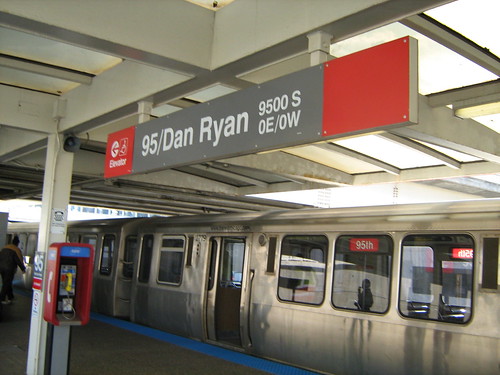Closing down the Red Line between Roosevelt Road and 95th Street from May to September this year is a necessary evil. The $425 million Red Line South Track Renewal Project will force South Side commuters to switch to the Green Line and/or temporary shuttle buses during construction, but ripping out and replacing the 10.2 miles of track will result in 30 or 40 years of faster service.
When the CTA announced the shutdown last year, many South Siders were understandably upset, arguing the agency was being insensitive to the needs of low-income individuals and people of color. After all, during the $530 million Brown Line Capacity Expansion Project, which took place a few years ago in mostly white, more affluent neighborhoods, the trains kept running and the work was largely done on weekends. However, that project chiefly involved station renovations, not track renewal.
“People have said, ‘If we were up north you wouldn’t be doing it this way,’” CTA spokeman Steve Mayberry told me. “But anywhere in our system where you’re looking at completely replacing the tracks, you’d have to shut it down. When you remove emotion and look at the facts, doing it this way makes a lot of sense.”
He says if the CTA did the South Red Line work on weekends only it would take four more years and another $75 million. This “ripping off the Band-Aid” approach means South Side customers will have a much shorter wait for faster service. The agency estimates that by eliminating slow zones it will cut travel times for the round trip from 95th to Roosevelt and back by 20 minutes.
In the meantime, the Emanuel administration is offering a spoonful of sugar to help make the bitter medicine of Red Line service interruption go down easier. Earlier this week the mayor’s office sent out press releases heralding the creation of more than 400 bus driver jobs and 100 traffic control aide positions in conjunction with the track rehab.
The CTA has already hired the drivers for these part-time positions operating the shuttles and expanded supplemental bus service, choosing from a pool of over 4,000 applicants. According to the city, the vast majority of the incoming bus operators heard about the openings via three job fairs held last summer near the South Red Line, so it’s safe to assume most of these new hires are South Siders.
The press release also notes that the reconstruction project is creating jobs for hundreds of ironworkers, electricians, carpenters, plumbers and other tradespeople. While the CTA is not hiring these laborers directly, it is working with the general contractors to make sure that opportunities are available to unemployed and “economically disadvantaged” individuals via the Workforce Investment Act.
The agency also organized several meetings between the contractors and Disadvantaged Business Enterprise firms, which helped bring DBE participation in the track work contract up to 29 percent, which exceeded the CTA’s goals. There will be 40 percent DBE involvement in the station work contract.
While we don’t expect folks on the South Side to be happy about having to put up with commuting delays during the five-month Red Line shutdown, they can look forward to much shorter travel times once the work is complete. And hopefully the city’s successful efforts to create employment for South Siders, including low-income folks and people of color, as part of this project will make the bitter pill of short term hassles easier to swallow.






